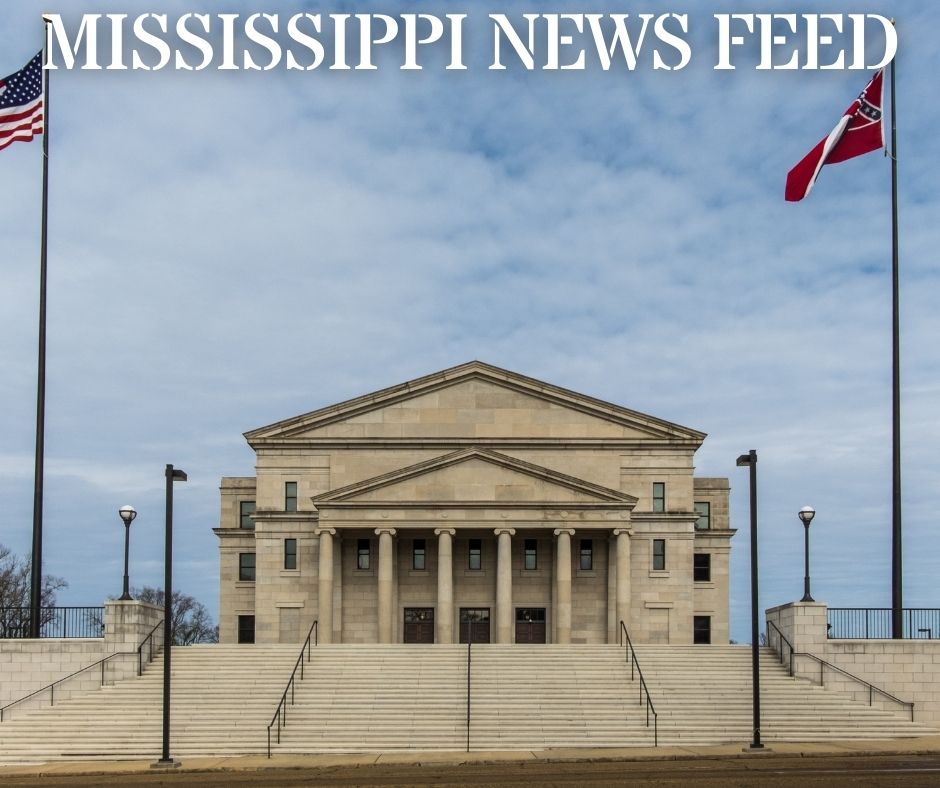Mississippi Today
‘We will be in court’: Monticello pushes back on Corps’ new Jackson proposal
MONTICELLO — Even with an adjusted proposal to tackle flood risk in Jackson, U.S. Army Corps of Engineers still faces a steady flow of opposition downstream along the Pearl River.
“Let me assure you that Louisiana and Mississippi will sue you,” Rep. Becky Currie, R-Brookhaven, told a panel of Corps officials Thursday night. “We will be in court fighting over you destroying our recreation, our way of life, our wildlife, our fishing and hunting and recreation. We will be in court.”
Last month, the Corps released a new draft environmental impact statement as part of the process for selecting a plan to create flood control in Jackson. The report suggested that a plan that would cost anywhere from $487 million to $655 million may be the most justifiable under the agency’s cost-benefit analysis.
The agency is receiving public feedback on the report until Aug. 6 after recently extending the deadline. The Corps will then use feedback from the public, as well as other government agencies, to craft a final EIS. The agency’s timeline projects a final decision in December from Michael Connor, the assistant secretary of the Army for Civil Works .
Over the last decade or so that Rankin and Hinds County officials have pushed a flood control plan known as “One Lake,” officials and residents downstream have shouted back. They argue that the plan, which would relocate a dam and widen the Pearl River near Jackson, would disrupt the river’s downstream flow and, thus, also the wildlife and industries that rely on it.
In its June report, the Corps suggested that One Lake may have too large of a price tag to justify. However, the report also says that “Alternative D,” which includes similar components as One Lake, may be the most justifiable based on the agency’s cost-benefit analysis.
Alternative D would create a smaller lake (about two-thirds the size) than what the One Lake plan would, and decrease mitigation costs by avoiding potential hazardous waste sites along the river. Alternative D also includes the option of elevating homes and voluntary buyouts for some of those in the floodplain.
Regardless of the differences, though, those in Monticello on Thursday still saw the fundamentals of what they’ve spent years protesting: a lake that, to some degree, is being advertised as recreation for those in the Jackson metro area.

“What’s this going to do to my paper mill?” Scotty McCloud asked the panel. McCloud has spent the last 44 years working at the local Georgia Pacific paper mill, one of the largest employers in the area. He argued that, if the mill doesn’t get the right quantity of water at the right temperature, not only would the mill suffer but so would Lawrence County as a whole.
Troy Constance, an environmental expert for the Corps, said that the agency’s modeling of the remaining flood control proposals shows minimal impact to the Pearl River’s flow once it reaches Monticello.
“We’re not seeing huge changes very far from (where the proposed weir, or dam, would go),” Constance said, adding later that the models the Corps used were some of the best he’d work with in his 39 years on the job.
Others in the audience, such as Alton Letchworth, argued that the Corps’ cost-benefit analysis didn’t make sense.
“You could buy out every home in the flood area, and you wouldn’t use half the money that you’re going to spend on this,” Letchworth said.
So far, the federal government has made $221 million available for the flood control project, meaning if Alternative D were selected, the project would still need another $266 million to $434 million in funding. Moreover, the local sponsor for the project — in this case the Rankin-Hinds Pearl River Flood and Drainage Control District — would be responsible for 35 percent of those costs, or $170 million to $229 million.
Constance replied to Letchworth that Alternative D would have a wider impact in terms of flood control than simply just offering buyouts, which would vary in success depending on the participation rate of property owners.
Earlier, though, a Corps official clarified how the agency calculates a project’s potential benefits: while at least 50 percent of the benefits have to come from flood control, additional benefits from recreational opportunities can be included in the agency’s analysis. Constance explained that the benefits of damming the river — which is what separates Alternative D and One Lake from other options the Corps is considering — would be recreational, not flood control-related.
Columbia Mayor Justin McKenzie and others argued, despite the Corps’ hydrological models, that the weir would harm those downstream similarly to what they saw after the Ross Barnett Reservoir was built in the 1960s.
“I do think there’s some responsible ways to do (this project) without creating a weir,” McKenzie said. “I don’t want any of my tax revenue to be spent on recreation of the lake in Jackson.”
Another possible impediment to the project is the Pearl River map turtle.
On Tuesday, the U.S. Fish and Wildlife Service listed the Pearl River map turtle as “threatened” under the Endangered Species Act, estimating that only 21,000 of the species remain in existence. The Pearl River map turtle’s habitat, the agency says, includes the Pearl River system in Mississippi and Louisiana.
“The science that the Service has gathered on the Pearl River map turtle indicates it could become endangered in the near future,” said Fish and Wildlife Biologist Luke Pearson in a press release. “These native freshwater map turtles are at risk and need our help. Working with state fish and wildlife agencies and our partners to conserve them is a priority.”
According to the Corps’ draft EIS, Alternative D is “likely to adversely affect but not likely to jeopardize the continuing existence of” the turtles. During Thursday’s meeting, Corps officials said they are still consulting with the USFWS on potential impacts to animals listed as threatened under the Endangered Species Act, and that the agency’s advice will be incorporated into the final EIS.
“(The project) would require some excavation for the banks (along the Pearl River), and those turtles have been known to rely on those banks,” Brandon Davis with the Corps said.
For more information on how to submit comments before the Aug. 6 deadline or on the draft EIS, visit the Corps’ project website here.
This article first appeared on Mississippi Today and is republished here under a Creative Commons license.
Mississippi Today
A Mississippi town moves a Confederate monument that became a shrouded eyesore
GRENADA (AP) — A Mississippi town has taken down a Confederate monument that stood on the courthouse square since 1910 — a figure that was tightly wrapped in tarps the past four years, symbolizing the community’s enduring division over how to commemorate the past.
Grenada’s first Black mayor in two decades seems determined to follow through on the city’s plans to relocate the monument to other public land. A concrete slab has already been poured behind a fire station about 3.5 miles (5.6 kilometers) from the square.
But a new fight might be developing. A Republican lawmaker from another part of Mississippi wrote to Grenada officials saying she believes the city is violating a state law that restricts the relocation of war memorials or monuments.
The Grenada City Council voted to move the monument in 2020, weeks after police killed George Floyd in Minneapolis. The vote seemed timely: Mississippi legislators had just retired the last state flag in the U.S. that prominently featured the Confederate battle emblem.
The tarps went up soon after the vote, shrouding the Confederate soldier and the pedestal he stood on. But even as people complained about the eyesore, the move was delayed by tight budgets, state bureaucracy or political foot-dragging. Explanations vary, depending on who’s asked.
A new mayor and city council took office in May, prepared to take action. On Sept. 11, with little advance notice, police blocked traffic and a work crew disassembled and removed the 20-foot (6.1-meter) stone structure.
“I’m glad to see it move to a different location,” said Robin Whitfield, an artist with a studio just off Grenada’s historic square. “This represents that something has changed.”
Still, Whitfield, who is white, said she wishes Grenada leaders had invited the community to engage in dialogue about the symbol, to bridge the gap between those who think moving it is erasing history and those who see it as a daily reminder of white supremacy. She was among the few people watching as a crane lifted parts of the monument onto a flatbed truck.
“No one ever talked about it, other than yelling on Facebook,” Whitfield said.
Mayor Charles Latham said the monument has been “quite a divisive figure” in the town of 12,300, where about 57% of residents are Black and 40% are white.
“I understand people had family and stuff to fight and die in that war, and they should be proud of their family,” Latham said. “But you’ve got to understand that there were those who were oppressed by this, by the Confederate flag on there. There’s been a lot of hate and violence perpetrated against people of color, under the color of that flag.”
The city received permission from the Mississippi Department of Archives and History to move the Confederate monument, as required. But Rep. Stacey Hobgood-Wilkes of Picayune said the fire station site is inappropriate.
“We are prepared to pursue such avenues that may be necessary to ensure that the statue is relocated to a more suitable and appropriate location,” she wrote, suggesting a Confederate cemetery closer to the courthouse square as an alternative. She said the Ladies Cemetery Association is willing to deed a parcel to the city to make it happen.
The Confederate monument in Grenada is one of hundreds in the South, most of which were dedicated during the early 20th century when groups such as the United Daughters of the Confederacy sought to shape the historical narrative by valorizing the Lost Cause mythology of the Civil War.
The monuments, many of them outside courthouses, came under fresh scrutiny after an avowed white supremacist who had posed with Confederate flags in photos posted online killed nine Black people inside the historic Emanuel African Methodist Episcopal Church in Charleston, South Carolina, in 2015.
Grenada’s monument includes images of Confederate president Jefferson Davis and a Confederate battle flag. It was engraved with praise for “the noble men who marched neath the flag of the Stars and Bars” and “the noble women of the South,” who “gave their loved ones to our country to conquer or to die for truth and right.”
A half-century after it was dedicated, the monument’s symbolism figured in a voting rights march. When the Rev. Martin Luther King Jr. and other civil rights leaders held a mass rally in downtown Grenada in June 1966, Robert Green of the Southern Christian Leadership Conference scrambled up the pedestal and planted a U.S. flag above the image of Davis.
The cemetery is a spot Latham himself had previously advocated as a new site for the monument, but he said it’s too late to change now, after the city already budgeted $60,000 for the move.
“So, who’s going to pay the city back for the $30,000 we’ve already expended to relocate this?” he said. “You should’ve showed up a year and a half ago, two years ago, before the city gets to this point.”
A few other Confederate monuments in Mississippi have been relocated. In July 2020, a Confederate soldier statue was moved from a prominent spot at the University of Mississippi to a Civil War cemetery in a secluded part of the Oxford campus. In May 2021, a Confederate monument featuring three soldiers was moved from outside the Lowndes County Courthouse in Columbus to another cemetery with Confederate soldiers.
Lori Chavis, a Grenada City Council member, said that since the monument was covered by tarps, “it’s caused nothing but more divide in our city.”
She said she supports relocating the monument but worries about a lawsuit. She acknowledged that people probably didn’t know until recently exactly where it would reappear.
“It’s tucked back in the woods, and it’s not visible from even pulling behind the fire station,” Chavis said. “And I think that’s what got some of the citizens upset.”
This article first appeared on Mississippi Today and is republished here under a Creative Commons license.
Crooked Letter Sports Podcast
Podcast: New Orleans sports columnist and author Jeff Duncan joins the podcast to talk about his new Steve Gleason book and the new-look New Orleans Saints.
Jeff Duncan went from the Mississippi Book Festival in Jackson on Saturday to Jerry World in Dallas on Sunday where he watched and wrote about the Saints’ total dismantling of the Dallas Cowboys. We talk about both events and also about what happened in high school and college football last weekend and what’s coming up this weekend.
Stream all episodes here.
This article first appeared on Mississippi Today and is republished here under a Creative Commons license.
Mississippi Today
On this day in 1899
Sept. 18, 1899

Scott Joplin, known as “the King of Ragtime,” copyrighted the “Maple Leaf Rag,” which became the first song to sell more than 1 million copies of sheet music. The popularity launched a sensation surrounding ragtime, which has been called America’s “first classical music.”
Born near Texarkana, Texas, Joplin grew up in a musical family. He worked on the railroad with other family members until he was able to earn money as a musician, traveling across the South. He wound up playing at the World’s Fair in Chicago in 1893, where he met fellow musician Otis Saunders, who encouraged him to write down the songs he had been making up to entertain audiences. In all, Joplin wrote dozens of ragtime songs.
After some success, he moved to New York City, hoping he could make a living while stretching the boundaries of music. He wrote a ragtime ballet and two operas, but success in these new forms eluded him. He was buried in a pauper’s grave in New York City in 1917.
More than six decades later, his music was rediscovered, initially by Joshua Rifkin, who recorded Joplin’s songs on a record, and then Gunther Schuller of the New England Conservatory, who performed four of the ragtime songs in concert: “My faculty, many of whom had never even heard of Joplin, were saying things like, ‘My gosh, he writes melodies like Schubert!’”
Joplin’s music won over even more admirers through the 1973 movie, “The Sting,” which won an Oscar for the music. His song, “The Entertainer,” reached No. 3 on Billboard and was ranked No. 10 among “Songs of the Century” list by the Recording Industry Association of America. His opera “Treemonisha” was produced to wide acclaim, and he won a Pulitzer Prize in 1976 for his special contribution to American music.
“The ragtime craze, the faddish thing, will obviously die down, but Joplin will have his position secure in American music history,” Rifkin said. “He is a treasurable composer.”
This article first appeared on Mississippi Today and is republished here under a Creative Commons license.
-
Mississippi News Video6 days ago
Woman arrested after reposting school threat in Calhoun County
-
News from the South - Louisiana News Feed6 days ago
Food drive underway for Hurricane Francine victims in Kenner
-
Mississippi Today3 days ago
On this day in 1925
-
News from the South - Kentucky News Feed5 days ago
The search for Joseph Couch intensifies
-
News from the South - Alabama News Feed3 days ago
Diddy Arrested In Manhattan | September 16, 2024 | News 19 at 10 p.m.
-
News from the South - Alabama News Feed5 days ago
Sylacauga Church welcomes Haitian migrants amid speculations
-
Mississippi Today3 days ago
Another Midwest drought is causing transportation headaches on the Mississippi River
-
News from the South - Florida News Feed7 days ago
Tropics update: Tropical Depression 7, 2 other disturbances brewing in Atlantic











































